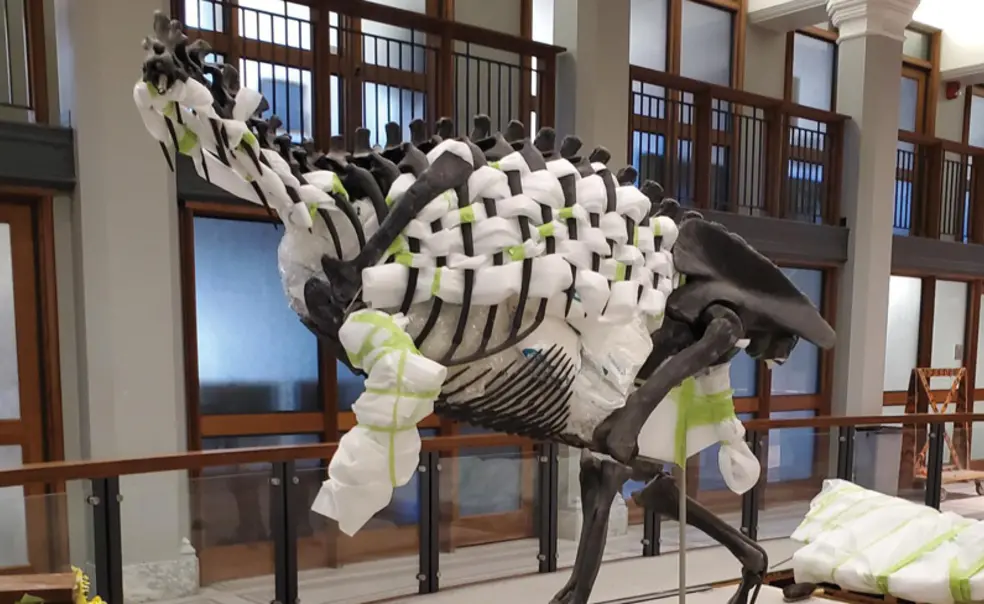A New Home — and Pose — For Guyot’s Allosaurus
After refurbishment, the dinosaur will be installed in the new Environmental Studies building, which is currently under construction
Princeton’s allosaurus, excavated by University paleontologists in Utah during the late 1930s and early ’40s, is on the move after spending more than six decades in the central hallway of Guyot Hall.
In October, the allosaurus, nicknamed “Al” by geosciences faculty and staff, was shipped to Canada for refurbishment in advance of its installation at the new Environmental Studies building on Ivy Lane in the spring of 2025.
The head, tail, and hind legs were removed and packed, and the remaining portion was wrapped for protection before being moved down the stairway to a waiting truck. Research Casting International, a firm that specializes in fossil restoration and museum exhibits, is creating an external armature that will allow researchers to remove individual bones for study, according to Frances Hannan, communications manager for Princeton’s facilities department.
“During preparation meetings for the move, the experts noted that she’s mounted in an upright pose,” instead of the more horizontal alignment now believed to be the Late Jurassic-era dinosaur’s likely posture, Hannan told PAW in an email.
Since the allosaurus was already undergoing cleaning and repairs, Hannan said, “the team decided to add a re-pose so she reflects the most modern scientific understanding.”
Guyot Hall is also embarking on a transformation: It will be renovated and repurposed as Eric and Wendy Schmidt Hall, a new home for computer science scheduled to open in 2029.
Editor’s note: This story has been updated to correct the name of the Environmental Studies building.












No responses yet